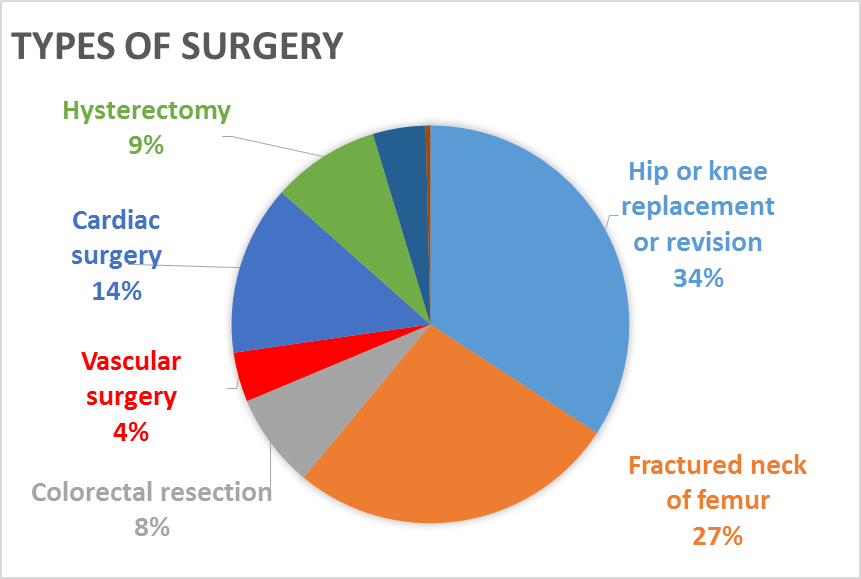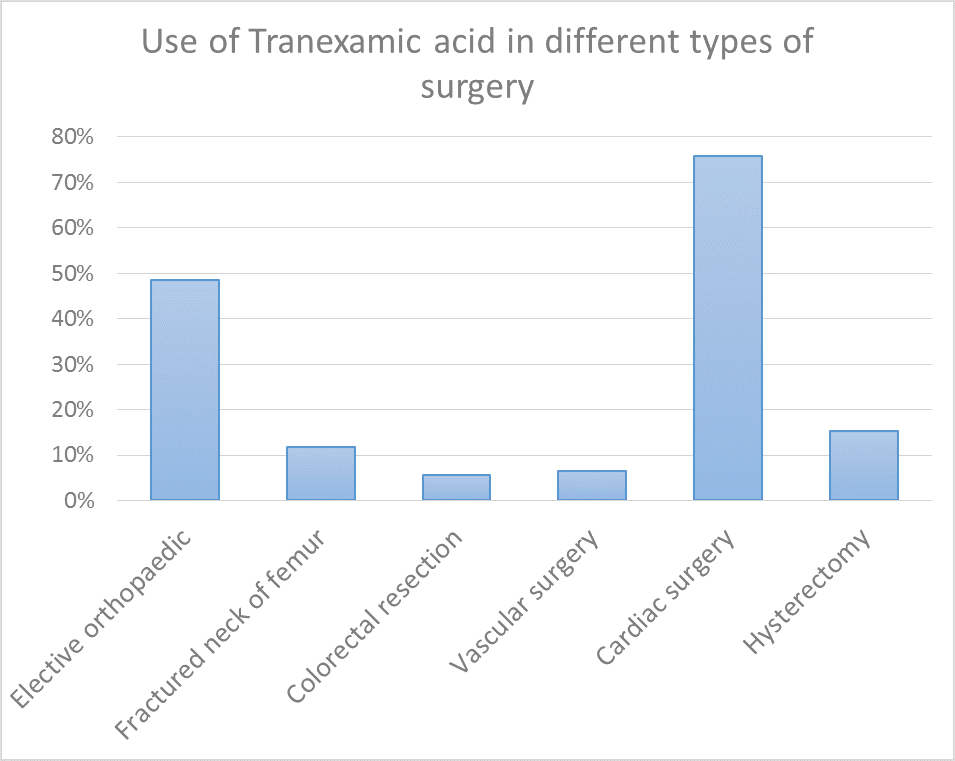Adults undergoing elective, scheduled surgery
Patient Blood Management in adults undergoing elective, scheduled surgery (2015)
Key aim
We assessed surgical patients against 11 Patient Blood Management (PBM) algorithms, in preoperative (5) operative (2) and post-operative care settings (4).
Objectives
We audited elective procedures likely to be associated with high transfusion use including orthopaedic, cardiac, colorectal, urological, gynaecological and vascular surgery.
We also audited patients with a fractured neck of femur because they represent a large transfusion user group providing an opportunity to assess the scope for PBM measures in the urgent care setting, acknowledging that pre-operative management is often impractical.
Who took part
We audited 3897 patients from 190 sites over 3 months in 2015.

What did we find?
- Audit report (PDF)
Preoperative (excluding fractured neck of femur)
Preoperative anaemia was common and was present in half of patients but was often identified relatively late prior to surgery. Only half of patients had a haemoglobin level tested at least 14 days preoperatively PBM algorithm 1. This was despite an average of 42 days between listing for elective surgery and operation.
Only 22% (139/642) of people known to be anaemic had their ferritin or transferrin saturation checked.
In those receiving a blood transfusion preoperatively only three patients had had some form of preoperative anaemia management before they received a transfusion PBM algorithm 3.
Preoperative (including fractured neck of femur)
Blood transfusion in the preoperative setting was rarely performed appropriately PBM algorithm 2. Only 12% (28/278) received a blood transfusion when the haemoglobin was < 70g/L or < 80 g/L if patient had acute coronary ischaemia. The reason for transfusion above this level was due to apparent symptoms of anaemia (shortness of breath, hypotension) or pre-surgical optimisation in 12%, blood loss in 22%, and other cardiac disease in 16%.
A single unit transfusion policy was rarely adopted. Most patients (78%; 205/263) received more than one unit of blood PBM algorithm 4 and the haemoglobin was rarely checked between each unit of blood (7%; 15/205).
Operative
During the operation most patients received at least one PBM measure prior to blood transfusion (83%) PBM algorithm 6, but rarely all recommended PBM measures (16%) PBM algorithm 7. In particular there was significant variation in the use of Tranexamic Acid

Post operative
2878 patients had a post operative transfusion PBM algorithm 8.
Post operative blood transfusion was often not performed within recommendations (76%). A single unit transfusion policy was followed in just over a third of cases (38%) PBM algorithm 9.
Post operatively, in those who received a transfusion, most patients had received at least one of the proposed PBM measures (85%). PBM algorithm 10 but blood transfusion was performed following all recommended PBM measures in only 8% of cases PBM algorithm 11.
- Recommendations (PDF)
Resources to help improve practice
Please cite this document as:
The PBM in Elective Surgery Working Group on behalf of the National Comparative Audit of Blood Transfusion. 'The 2015 Patient Blood Management in adults undergoing elective, scheduled surgery' (2015). https://doi.org/10.71745/0330-gr53
Publications
